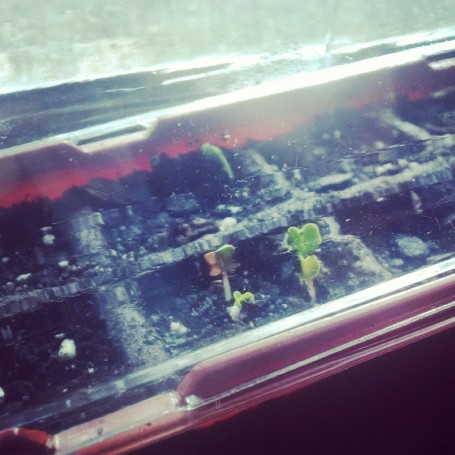It’s cold outside and there isn’t much green outside, even down here in the South, this time of year.
However, when you just want to cozy up inside and have a hot bowl of soup, it can give you time to prepare for the Spring and Summer months; after all, there are bathing suits in the stores already!
I’ve been trying out a few different apps (Noom, Endomondo, and MyFitnessPal to name a few) to monitor my nutritional intake and my physical activity. I’ll post in the future about my reviews on those. Like many others, I take January to re-assess my needs and focus on my weaknesses (again, did I mention the bathing suits?!?!). I’ve stumbled upon a few free fitness websites I’d like to share if you’re getting ready for the warmer seasons like I am: Fitness Blender on Youtube and ToneItUp.com (which is really geared towards the female population but trust me, if you can look past all the girly marketing, there are some great workouts for anyone!). I don’t get anything from anyone to share these; I just like to share anything I come across that might be helpful (and especially if it’s free!).
I’ve been telling myself every morning my new mantra “Summer bodies are made in the winter”. So, I’ve changed some workout habits and as I have posted previously, I’ve been working to shift to a ‘clean eating’ lifestyle. Which brings me to two topics I want to share: 1. Clean eating recipes I will start to implement as I try them out and 2. Updates, occasionally, on my own garden in which I will include some form of nutritional tips to accompany those posts (recipes, what’s in season, tips on storing them, etc).
To ensure I have a long growing season of delicious vegetables to eat, I had to start some seedlings, early, indoors.
Speaking of, let me introduce you to my favorite soup recipe during the winter months:
Cabbage & Garden Vegetable Soup
Ingredients:
- 1 potato
- 1 medium cabbage (we like red but green tastes delicious too)
- Tomato paste to taste
- 1 turnip
- 3 medium carrots
- 3 cups diced vegetables of choice
- Salt and black pepper to taste.
Directions:
- Boil 2 quarts of water in a large pot. Add olive oil, as desired.
- Peel potato. Dice it up and boil in 2 quarts of water until tender. Once tender, mash it up in the water, as desired.
- Add tomato paste, salt, and black pepper to taste.
- Dice up all vegetable, as desired (you might like chunky or smaller pieces), and put in pot of boiling water.
- Add cabbage last, putting in as much as will fit. Let it boil down and add more, as able.
- Add water, if needed.
- Approximate cooking time is 1 – 1.5 hours. Taste broth and add seasonings as desired.



